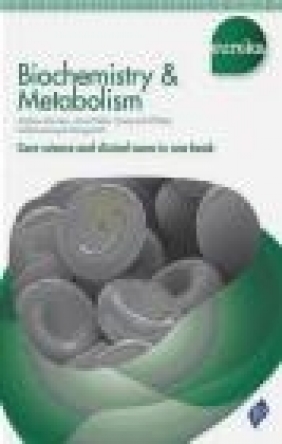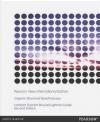Organic Structural Spectroscopy: Pearson New International Edition
David Lightner, Robert Graham Cooks, Herbert Shurvell
Organic Structural Spectroscopy: Pearson New International Edition
David Lightner, Robert Graham Cooks, Herbert Shurvell
- Producent: Pearson
- Rok produkcji: 2013
- ISBN: 9781292039565
- Ilość stron: 464
- Oprawa: Miękka
Niedostępna
Opis: Organic Structural Spectroscopy: Pearson New International Edition - David Lightner, Robert Graham Cooks, Herbert Shurvell
Chapter 1 Introduction 1-1 The Spectroscopic Approach to Structure Determination 1-2 Contributions of Different Forms of Spectroscopy 1-3 The Electromagnetic Spectrum 1-4 Molecular Weight and Molecular Formula 1-5 Structural Isomers and Stereoisomers Problems Part I NUCLEAR MAGNETIC RESONANCE SPECTROSCOPY Chapter 2 Introduction 2-1 Magnetic Properties of Nuclei 2-2 The Chemical Shift 2-3 Excitation and Relaxation 2-4 Pulsed Experiments 2-5 The Coupling Constant 2-6 Quantification and Complex Splitting 2-7 Commonly Studied Nuclides 2-8 Dynamic Effects 2-9 Spectra of Solids 2-10 Experimental Methods Problems Tips on Solving NMR Problems Bibliography Chapter 3 The Chemical Shift 3-1 Factors That Influence Proton Shifts 3-2 Proton Chemical Shifts and Structure 3-3 Medium and Isotope Effects 3-4 Factors That Influence Carbon Shirts 3-5 Carbon Chemical Shifts and Structure 3-6 Tables of Chemical Shifts Problems Further Tips on Solving NMR Problems Bibliography Chapter 4 The Coupling Constant 4-1 First-Order Spectra 4-2 Chemical and Magnetic Equivalence 4-3 Signs and Mechanisms 4-4 Couplings over One Bond 4-5 Geminal Couplings 4-6 Vicinal Couplings 4-7 Long-Range Couplings 4-8 Spectral Analysis 4-9 Second-Order Spectra 4-10 Tables of Coupling Constants Problems Bibliography Chapter 5 Further Topics in One-Dimensional NMR 5-1 Spin-Lattice and Spin-Spin Relaxation 5-2 Reactions on the NMR Time Scale 5-3 Multiple Resonance 5-4 The Nuclear Overhauser Effect 5-5 Spectral Editing 5-6 Sensitivity Enhancement 5-7 Carbon Connectivity 5-8 Phase Cycling, Composite Pulses, and Shaped Pulses Problems Bibliography Chapter 6 Two-Dimensional NMR 6-1 Proton-Proton Correlation Through Coupling 6-2 Proton-Heteronucleus Correlation 6-3 Proton-Proton Correlation Through Space or Chemical Exchange 6-4 Carbon-Carbon Correlation 6-5 Higher Dimensions 6-6 Pulsed Field Gradients 6-7 Summary of Two-Dimensional Methods Problems Bibliography Part II MASS SPECTROMETRY Chapter 7 Instrumentation and Theory 7-1 Introduction 7-2 Ionization Methods 7-3 Mass Analysis 7-4 Sample Preparation Chapter 8 Ion Activation and Fragmentation 8-1 Basic Principles 8-2 Methods and Energetics 8-3 Functional Groups Chapter 9 Structural Analysis 9-1 Molecular Weights 9-2 Molecular Formula 9-3 Structures from Fragmentation Patterns 9-4 Polymers Chapter 10 Quantitative Applications 10-1 Quantification of Analytes 10-2 Thermochemistry Part III VIBRATIONAL SPECTROSCOPY Chapter 11 Introduction 11-1 Introduction 11-2 Vibrations of Molecules 11-3 Infrared and Raman Spectra 11-4 Units and Notation 11-5 Infrared Spectra: Dispersive and Fourier Transform 11-6 Sampling Methods for Infrared Transmission Spectra 11-7 Raman Spectroscopy 11-8 Raman Sampling Methods 11-9 Depolarization Measurements 11-10 Infrared Reflection Spectroscopy Problems Bibliography Chapter 12 Group Frequencies 12-1 Introduction 12-2 Factors Affecting Group Frequencies 12-3 Infrared Group Frequencies 12-4 Raman Group Frequencies 12-5 Preliminary Analysis 12-6 The CH Stretching Region (3340-2700 cm-1) 12-7 The Carbonyl Stretching Region (1850-1650 cm-1) 12-8 Aromatic Compounds 12-9 Compounds Containing Methyl Groups 12-10 Compounds Containing Methylene Groups 12-11 Unsaturated Compounds 12-12 Compounds Containing Oxygen 12-13 Compounds Containing Nitrogen 12-14 Compounds Containing Phosphorus and Sulfur 12-15 Heterocyclic Compounds 12-16 Compounds Containing Halogens 12-17 Boron, Silicon, Tin, Lead, and Mercury Compounds 12-18 Isotopically Labeled Compounds 12-19 Using the Literature on Vibrational Spectroscopy Problems Bibliography Part IV ELECTRONIC ABSORPTION SPECTROSCOPY Chapter 13 Introduction and Experimental Methods 13-1 Introduction 13-2 Measurement of Ultraviolet-Visible Light Absorption 13-3 Quantitative Measurements 13-4 Electronic Transitions 13-5 Experimental Aspects Problems Bibliography Chapter 14 Structural Analysis 14-1 Isolated Chromophores 14-2 Conjugated Chromophores 14-3 Aromatic Compounds 14-4 Important Naturally Occurring Chromophores 14-5 The Woodward-Fieser Rules 14-6 Steric Effects 14-7 Solvent Effects and Dynamic Equilibria 14-8 Hydrogen Bonding Studies 14-9 Homoconjugation 14-10 Charge Transfer Band 14-11 Worked Problems Problems Bibliography Chapter 15 Integrated ProblemsChapter 1 Introduction 1-1 The Spectroscopic Approach to Structure Determination 1-2 Contributions of Different Forms of Spectroscopy 1-3 The Electromagnetic Spectrum 1-4 Molecular Weight and Molecular Formula 1-5 Structural Isomers and Stereoisomers Problems Part I NUCLEAR MAGNETIC RESONANCE SPECTROSCOPY Chapter 2 Introduction 2-1 Magnetic Properties of Nuclei 2-2 The Chemical Shift 2-3 Excitation and Relaxation 2-4 Pulsed Experiments 2-5 The Coupling Constant 2-6 Quantification and Complex Splitting 2-7 Commonly Studied Nuclides 2-8 Dynamic Effects 2-9 Spectra of Solids 2-10 Experimental Methods Problems Tips on Solving NMR Problems Bibliography Chapter 3 The Chemical Shift 3-1 Factors That Influence Proton Shifts 3-2 Proton Chemical Shifts and Structure 3-3 Medium and Isotope Effects 3-4 Factors That Influence Carbon Shirts 3-5 Carbon Chemical Shifts and Structure 3-6 Tables of Chemical Shifts Problems Further Tips on Solving NMR Problems Bibliography Chapter 4 The Coupling Constant 4-1 First-Order Spectra 4-2 Chemical and Magnetic Equivalence 4-3 Signs and Mechanisms 4-4 Couplings over One Bond 4-5 Geminal Couplings 4-6 Vicinal Couplings 4-7 Long-Range Couplings 4-8 Spectral Analysis 4-9 Second-Order Spectra 4-10 Tables of Coupling Constants Problems Bibliography Chapter 5 Further Topics in One-Dimensional NMR 5-1 Spin-Lattice and Spin-Spin Relaxation 5-2 Reactions on the NMR Time Scale 5-3 Multiple Resonance 5-4 The Nuclear Overhauser Effect 5-5 Spectral Editing 5-6 Sensitivity Enhancement 5-7 Carbon Connectivity 5-8 Phase Cycling, Composite Pulses, and Shaped Pulses Problems Bibliography Chapter 6 Two-Dimensional NMR 6-1 Proton-Proton Correlation Through Coupling 6-2 Proton-Heteronucleus Correlation 6-3 Proton-Proton Correlation Through Space or Chemical Exchange 6-4 Carbon-Carbon Correlation 6-5 Higher Dimensions 6-6 Pulsed Field Gradients 6-7 Summary of Two-Dimensional Methods Problems Bibliography Part II MASS SPECTROMETRY Chapter 7 Instrumentation and Theory 7-1 Introduction 7-2 Ionization Methods 7-3 Mass Analysis 7-4 Sample Preparation Chapter 8 Ion Activation and Fragmentation 8-1 Basic Principles 8-2 Methods and Energetics 8-3 Functional Groups Chapter 9 Structural Analysis 9-1 Molecular Weights 9-2 Molecular Formula 9-3 Structures from Fragmentation Patterns 9-4 Polymers Chapter 10 Quantitative Applications 10-1 Quantification of Analytes 10-2 Thermochemistry Part III VIBRATIONAL SPECTROSCOPY Chapter 11 Introduction 11-1 Introduction 11-2 Vibrations of Molecules 11-3 Infrared and Raman Spectra 11-4 Units and Notation 11-5 Infrared Spectra: Dispersive and Fourier Transform 11-6 Sampling Methods for Infrared Transmission Spectra 11-7 Raman Spectroscopy 11-8 Raman Sampling Methods 11-9 Depolarization Measurements 11-10 Infrared Reflection Spectroscopy Problems Bibliography Chapter 12 Group Frequencies 12-1 Introduction 12-2 Factors Affecting Group Frequencies 12-3 Infrared Group Frequencies 12-4 Raman Group Frequencies 12-5 Preliminary Analysis 12-6 The CH Stretching Region (3340-2700 cm-1) 12-7 The Carbonyl Stretching Region (1850-1650 cm-1) 12-8 Aromatic Compounds 12-9 Compounds Containing Methyl Groups 12-10 Compounds Containing Methylene Groups 12-11 Unsaturated Compounds 12-12 Compounds Containing Oxygen 12-13 Compounds Containing Nitrogen 12-14 Compounds Containing Phosphorus and Sulfur 12-15 Heterocyclic Compounds 12-16 Compounds Containing Halogens 12-17 Boron, Silicon, Tin, Lead, and Mercury Compounds 12-18 Isotopically Labeled Compounds 12-19 Using the Literature on Vibrational Spectroscopy Problems Bibliography Part IV ELECTRONIC ABSORPTION SPECTROSCOPY Chapter 13 Introduction and Experimental Methods 13-1 Introduction 13-2 Measurement of Ultraviolet-Visible Light Absorption 13-3 Quantitative Measurements 13-4 Electronic Transitions 13-5 Experimental Aspects Problems Bibliography Chapter 14 Structural Analysis 14-1 Isolated Chromophores 14-2 Conjugated Chromophores 14-3 Aromatic Compounds 14-4 Important Naturally Occurring Chromophores 14-5 The Woodward-Fieser Rules 14-6 Steric Effects 14-7 Solvent Effects and Dynamic Equilibria 14-8 Hydrogen Bonding Studies 14-9 Homoconjugation 14-10 Charge Transfer Band 14-11 Worked Problems Problems Bibliography Chapter 15 Integrated Problems
Producent:
GPSR Pearson Central Europe Sp. z o.o.
ul. Szamocka 8
01-748 Warszawa (PL)
tel: 459 596 060
email: [email protected]
Szczegóły: Organic Structural Spectroscopy: Pearson New International Edition - David Lightner, Robert Graham Cooks, Herbert Shurvell
Tytuł: Organic Structural Spectroscopy: Pearson New International Edition
Autor: David Lightner, Robert Graham Cooks, Herbert Shurvell
Producent: Pearson
ISBN: 9781292039565
Rok produkcji: 2013
Ilość stron: 464
Oprawa: Miękka
Waga: 0.94 kg





























